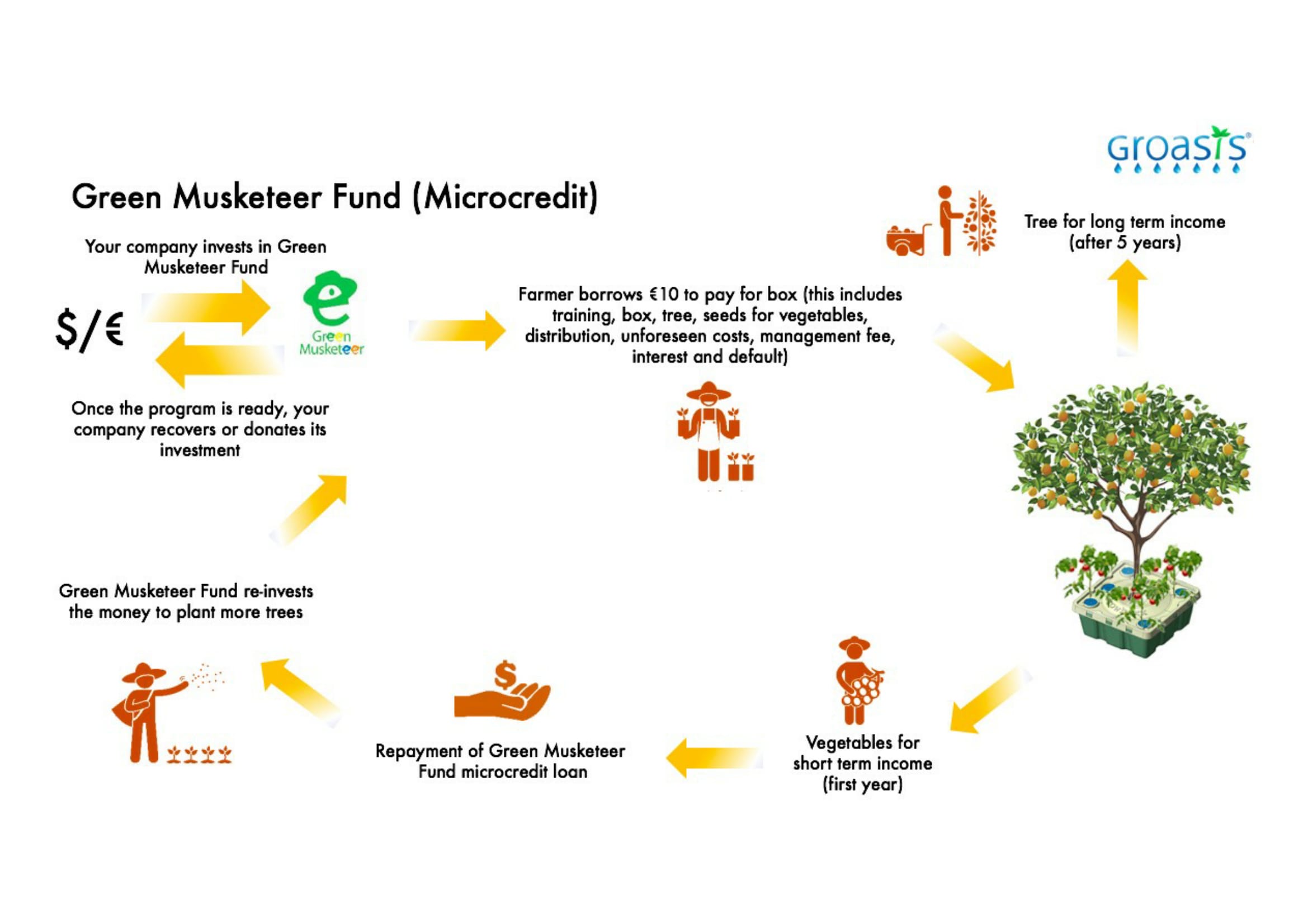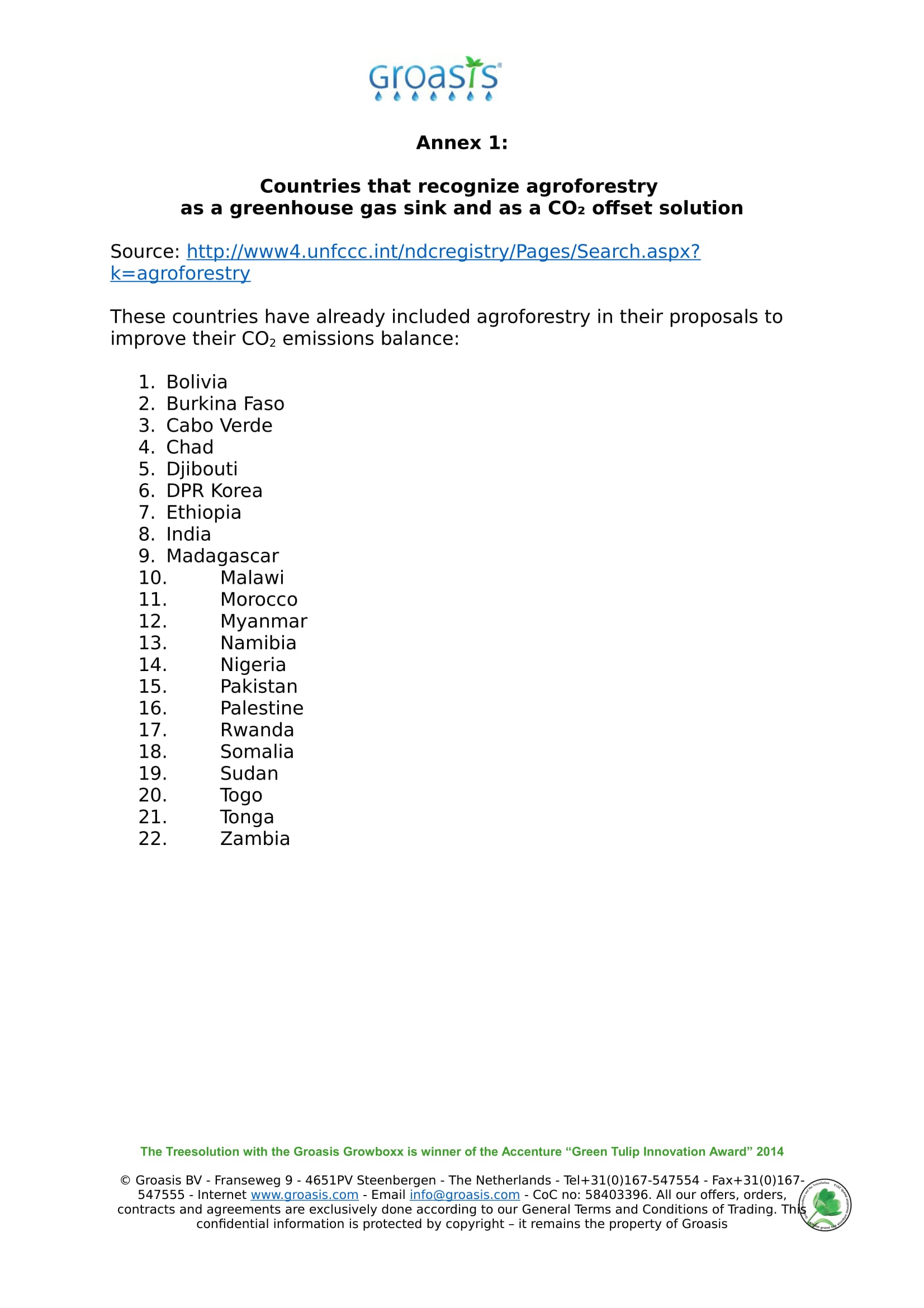


Financing the plantation of trees in poor developing countries is impossible. Banks need collateral but in general there is common land ownership and no kadaster. Often the population register is not complete so banks do not know where the money lender lives. At last trees start to produce after 5 to 7 years and banks want the interest and redemption as of the first year, so the money lender cannot pay its loan. For this reason not enough productive trees are planted, although agroforestry would be the best solution for dry and eroded countries.
The planting of trees in combination with vegetables offers a possibility to microfinance the planting. The trees cause long term cashflow, the vegetables produce food for the family, and they can sell their overproduction which causes the short term cashflow. The short term cashflow enables them to pay their microfinance. The microfinance can be done with a revolving fund.
The vegetables production in combination with the efficient water use, offers a possibility to reforest the world with productive trees.
The microfinance can be given by a revolving fund. The money lender lends money, repays within a year, the fund can lend it again. This system can repeat itself eternally.
At the moment we are working on a scheme where companies fund the revolving fund and receive carbon credits. Already 22 countries accept agroforestry as a way to offset CO2. We can offset CO2 for less than 1 USD costs per ton.
The interesting factor is that the offset CO2 through agroforestry, enriches the soil. Through photosynthesis the trees disconnect the CO2 in C and O2. The O2 retruns to the atmosphere. The C is used to produce food, medicines, fodder, timber, etc. Over 35% of the C is entering the soil in order to be transformed to humus.
Trees as a CO₂ offset solution
COP21 Paris Treaty accepts carbon sinks through trees, as outlined in article 4.1 – page 21:
In order to achieve the long-term temperature goal set out in Article 2, Parties aim to reach global peaking of greenhouse gas emissions as soon as possible, recognizing that peaking will take longer for developing country Parties, and to undertake rapid reductions thereafter in accordance with best available science, so as to achieve a balance between anthropogenic emissions by sources and removals by sinks of greenhouse gases.
22 Countries have now accepted agroforestry as a CO₂ offset solution.At the moment we are having discussions with the first multinational company to use agroforestry as their CO2 offset program. This way we combine preventing climate change in a sustainable way in combination with necessary social components.